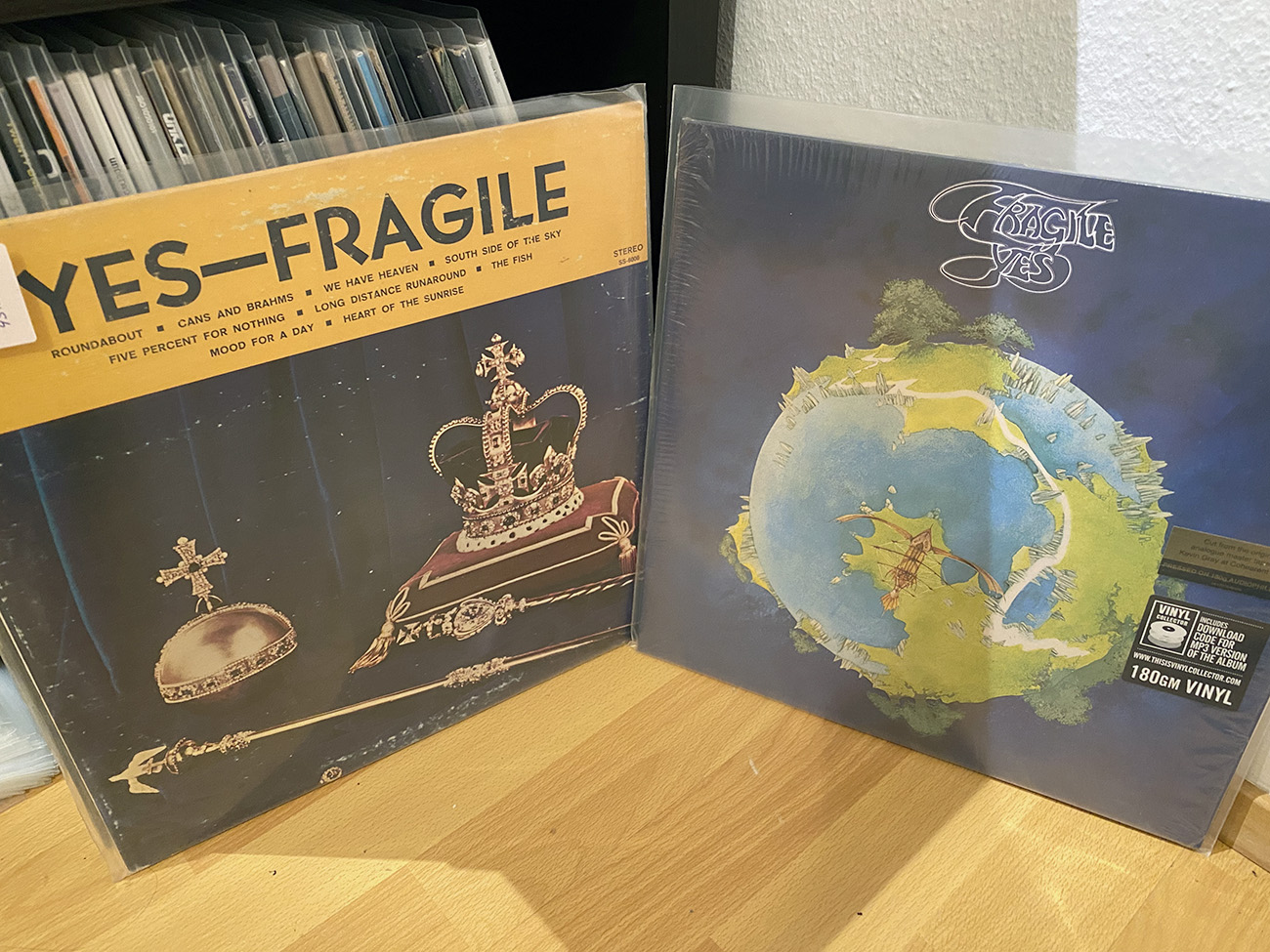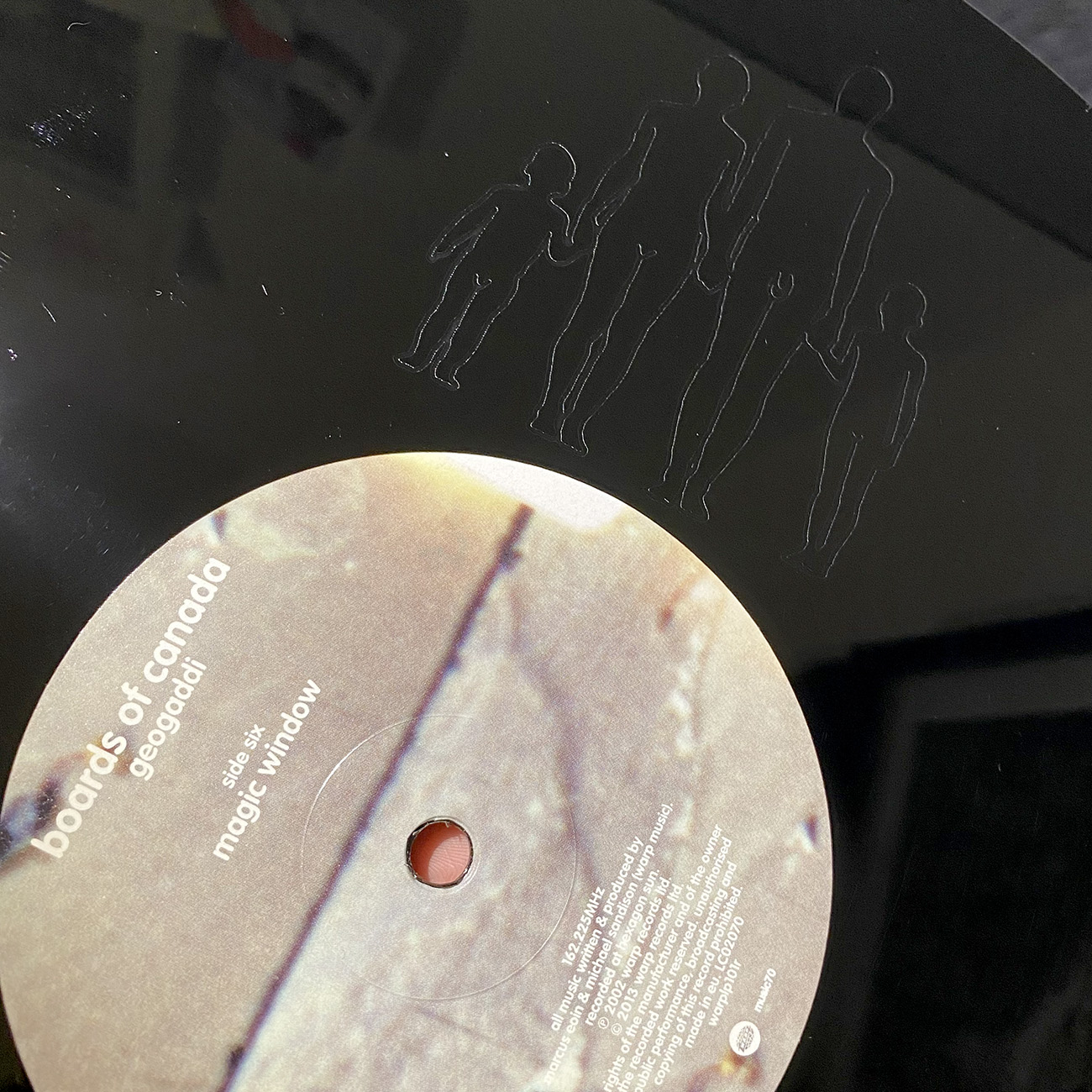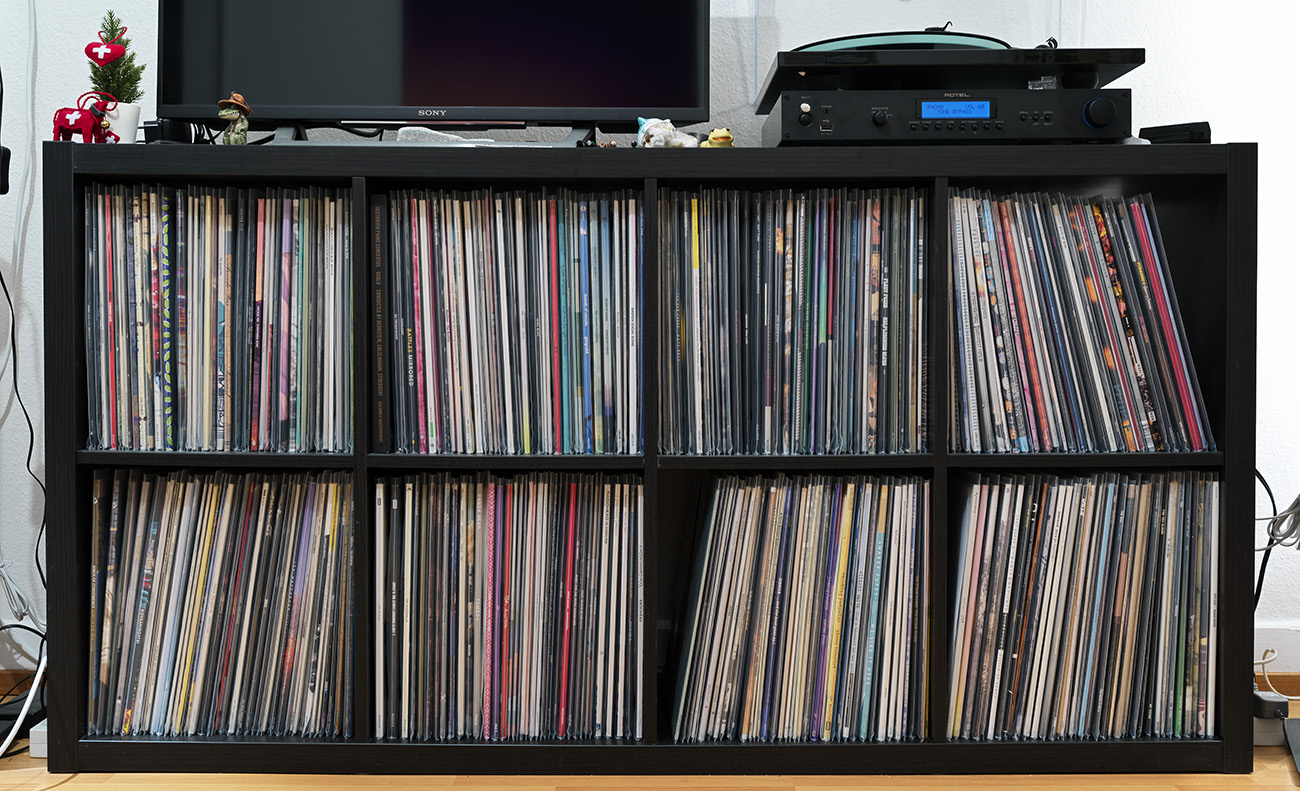Stumbling home one night last October (2020), somewhat inebriated i have to admit, i decided it was a good idea to purchase about 200.- CHF worth of vinyl. That’s the large circular music containing variety, not some sort of flooring. The kicker is that i didn’t have a record player at the time, but we will get to that.
We had been at a friends place, who had themselves recently purchased a record player, and i was surprised how good it sounded. I mean, compared to how i remembered it - growing up with my parents’ scratched, battered, warped, dusty collection, played on a low quality “all in one” record player, i had assumed all vinyl sounded like that. Like crap, basically.
I in no way consider myself an audiophile, because those people are nuts1, but i do appreciate it enough to have always invested in a decent quality set of separates: speakers (and cables + stands), amp, CD player (at the time), and so on. Just never a record player because, well, records sound like crap right?
Eh not so much. If you already have a decent setup and add a decent turntable to that, and have records in good condition then they can sound pretty good. In fact, they can sound really good. Do they sound better than other ways to listen to music? Sometimes yes2.
A year has passed since then and i’ve built up a, er, little collection. A lot of this has been purchasing various albums i grew up with and am particularly fond of. That was another surprise - just how much is available that i had assumed wouldn’t be. Why wouldn’t it be available though? In fact, that was the reason for my first splurge - would i really be able to get new (or close to new) copies of those albums? Yes, quite easily in fact.
And then i discovered there’s a record store specialising in vinyl just at the bottom of the mountain. One in the next town. A couple two towns further. And so on. So the collection started to grow quite quickly. In building up that collection i started to notice a few curiosities, which i thought i’d go into here.
Mastering Differences
Put this down under the “they can sound really good” bit i mentioned above - vinyl can be mastered differently, although i believe for the most part this doesn’t happen. One of the biggest differences, or perhaps i should say LOUDEST differences, is the fact that the physical limitations of the process of “cutting” a vinyl means it can’t be as heavily clipped3.
Of course, that doesn’t necessarily mean the dynamic range of a vinyl version of an album is better, as it can still be “brick walled”4 but just quieter. Volume and dynamic range aren’t quite the same thing. This is a problem of a large number of music releases post 1994, and it’s not limited to a particular format. It’s also the reason some pressings of albums sell for very high amounts - they were mastered very differently to the CD versions, and don’t suffer from these loudness war problems.
But anyway, there’s often discussion going on in various places about which version of a vinyl pressing is the best for mastering. Sure enough i’ve noticed some albums sound quite different on vinyl, often better, compared to the CD versions i remember and/or the digital versions i have been listening to for years - Hælos’ “Full Circle” sounds quite different on vinyl, with a lot of the very heavy bass reduced.
There doesn’t seem to be any pattern to this, at least as far as i can tell - albums you would expect to be treated with care can sound terrible (relatively speaking) and then you get random surprises. I bought Patrick Watson’s “Wave” on a whim, it was cheap and his band were the last we saw before lockdown. The vinyl sounds quite remarkable5.
Locked Groves
When a record is cut in such a way that part of if creates an infinite loop. The end of The Beatles’ “Sgt. Pepper’s Lonely Hearts Club Band” is probably the most well known example of a locked groove with sound in it, but these are pretty common it seems.
The most interesting use of one i’ve discovered is on Sole’s “Selling Live Water” album, with a silent locked groove before the final track on the album. This kind of makes sense as the final track is more of an addendum and feels out of place amongst the other tracks.

Then there are some albums that you would find a hidden track at the end, sometimes after over 15minutes of silence on the CD version. “Bloom” by “Beach House” is an example of one of these, on the vinyl version the “hidden” track is just done so with a locked grove so you need to get up and move the stylus to hear it.
Bootlegs / Unofficial Release
Given the hassle of having a vinyl record pressed you would be surprised that these things actually exist - it’s not like when you used to burn CDs. But yes, someone, or many people, will send a few digital files to a pressing plant and ask them to press a few hundred copies of an album and there you have it.
We’ve ended up acquiring a few of these as we didn’t know at the time. I was a bit suspicious when we found mint condition copies of a few albums in a shop in France, but it didn’t occur to me that they could be bootlegs even though i was sure these albums were long out of print and why were they being sold at €25 each?
When we got back and i looked at them in more detail it was clear - no markings in the dead wax to identify the pressings, the artwork and labels looked like they had been sourced from low resolution files or copies. Looking on discogs.com confirmed these were “Unofficial” releases. How do they sound? Eh, they sound alright i suppose.
An interesting one i have is a copy of “Fragile” by Yes, which i bought from a store down in the valley. The copy was labelled as the US first pressing, so i thought nothing of the cover art being completely different to the version i remembered from my dad’s (UK) collection.

When i listened to the record i knew something was off. I’d heard this album hundreds (thousands?) of times and the version spinning on my player sounded slightly too fast or slightly too high pitched. I compared it to the versions on my computer, and yes it was slightly too high pitched. I assumed my player was running a little fast maybe? No, that didn’t make sense - all the other albums i have sounded fine. Again, going onto discogs.com confirmed this was a bootleg release.
Track Reordering
A constraint of the format means that some albums have their tracks reordered to allow them to fit across two records. This can be quite jarring in some cases if you’re familiar (or fond) of the CD versions.
Orbital’s “Snivilisation” on vinyl fiddles with the order of the penultimate three tracks “Kein Trink Wasser”, “Quality Seconds”, and”Are We Here?”. Such is the nature of having the final two tracks add up to 27 minutes in length for the original running order. The alternative would be giving each track its own side, and that would have meant 3 discs rather than 2. Funnily enough they did that with their next album, which is why it was called “In Sides”.
The most jarring one of these, by a long way, is the stupidity on Röyksopp’s “Melody A.M.” which has two tracks swapped - the problem is that one of the previous track leads into one of the tracks that was swapped so you now have one track that abruptly ends and one that abruptly starts. This was definitely not done due to space issues.6
Coloured Variants / Etchings
Coloured vinyl has always been available, although these days they’re very common going into many different versions, variants, options, and styles. There is some discussion about if they are inferior (sound wise) to the plain old black versions, but that’s debatable. It’s more about quality control of the source material and final pressing, which has probably gotten better.
The ones you want to avoid are picture discs because, yes, they sound pretty bad. I purchased a Record Store Day (RSD) release by Björk, a 12” single pressed at 45rpm. It sounds “good” but there’s noticeable noise which i believe is an artefact of the process that puts the image on the disc.
Etchings are an interesting thing, and relate a little to the track reordering i mentioned above - when an album is too much for one disc but nowhere near enough for two discs what do you do? You can either spread the music out across all four sides or you can just use three sides and leave the fourth side blank.

Some pressings will spread the music across all four sides, which is a little annoying as that means you’re getting up to change sides more. I have some albums that i’m convinced could have been a single disc with no (noticeable) difference in sound quality. More on that below.
For those that do stick do just three sides, what do you do with that fourth side? Add an etching!
45 vs 33rpm
“Forty Fives” are usually found for pressings of 12” singles and EPs - you have, maybe, less than 15min of music to put onto two sides of a disc so you can spread it out. To do that you press it at 45rpm rather then 33rpm, it fills up the space and is higher resolution so supposed to sound better.
You do find albums that are pressed as 45rpm versions as well, which has the same problem as mentioned above - you end up having to press them over more discs/sides. I don’t know what the deciding factor is here? Cost? Sound quality? I do know that all the 45rpm albums i have sound really good. Do they sound better than the 33rpm versions? No idea.
I’m not sure what decision making goes into releasing a 45rpm version rather than a 33rpm version. Possibly it’s a length constraint - given most albums these days are longer than about 40minutes they will (most of the time) get released as 2 discs. If the album is around 55minutes or less then it could be pressed at 45rpm, which in theory gives better sound quality, but it seems most are not.
Case in point: Kanye’s “My Beautiful Dark Twisted Fantasy” is 68minutes of music pressed across 3 discs (6 sides), but is not a 45rpm release. It could have quite easily been one but they chose not to and instead have very long run outs on some sides, including one side that contains just 6minutes of music.
Packaging Bonuses / Box Sets
Packaging bonuses can range from posters to books to digital downloads (which seem standard these days) to even a CD version of the release tucked into the sleeve. I’m not bothered about these. They’re a nice to have, but not essential.
Box sets i’m also not bothered about as they take up too much room and often won’t fit on existing shelves, they end up tucked away out of sight. What i have done with the handful i’ve picked up is to remove the records from the box, put them into separate sleeves to go on my shelves, and then stored the original boxes away. That means i don’t have to faff around with the box when i want to listen to the music.
Actually on this point the packaging for releases can vary from extravagant gatefold editions to flimsy single cardboard sleeves. I don’t really find the packaging a compelling feature of buying records, i’m only really interested in the music. All my records are stored in such a way that i can easily access the disc without having to open more than is necessary. This should, in theory, mean the original packaging stays in good condition for longer.
The physical nature of vinyl does attract many people to the format, and the manufacturers know that so will release versions with extras exclusive to it. In fact there are some albums/EPs that are only released on vinyl in physical form and can’t be found on CD, which seems to be the opposite of the situation when the CD was the most popular format.
Turntable Technology
Cartridge, tonearm, plinth, platter, power unit, cables, belt, tracking force, counter weight, stylus, slip mat, anti skate, moving magnet, moving coil. All the stuff that is of consequence when picking a turntable to play the records on. Who knew there was so much in it?
It goes back to the “all in one” problem i mentioned at the start. The medium is constant, so the player is key. You can play a record with the most trivial contraption if you wish, but of course it will sound terrible.
As mentioned, i already had a decent set of separates so at first added the Rega Planar 2 player turntable. This fit in as it cost roughly the same as each of the other parts of the setup (i.e. the same as the amp, and the same as the speakers). Recently i upgraded to a Rega Planar 6 because, well, as i said the player is key.

The upgrade brought a much better cartridge/stylus along with a separate power unit with a switch for 33/45 control. You can get into quite silly territory with players, and the law of diminishing returns comes into play along with audiophile nonsense. The upgrade from the 6 model to the 8 doubles the price, to the 10 double again. Will it give double the performance? Nope, no chance. But that’s audio equipment for you.
Limited Editions / Scarcity?
It’s arguable that most vinyl releases are limited edition because they’re often printed in small numbers, certainly that goes for those pressed by the independent labels and releases before the increase in popularity of vinyl in recent years. Actual “limited edition” releases are common, often these are coloured variants that i covered above; an album will be released as standard black vinyl, along with a few hundred copies of coloured vinyl that form the limited edition.
Scarcity? Yes, well of course. I mean actual physical versions of things, that can be trivially represented in digital form, are inherently scarce. While digital creators are currently chasing after NFTs7 to introduce artificial scarcity, leaving many shaking their heads in disbelief, this dead format has had scarcity builtin since day one.
Even though i said it was quite easy to get many releases on vinyl there are many more that are not so easy to get. Either they were never released on the format, as they came out in the period when vinyl was selling at an all time low, or they had a single pressing run years/decades ago and haven’t been repressed since.
Sure you can get copies of those single pressing run releases, but expect to pay a fortune for them. There are many albums i’d like to have on vinyl but their current (second hand) price means that’s unlikely to ever happen and it’s unknown if they will ever be reprinted. These can sell for an order of magnitude more than their original release price.
Value
Scarcity doesn’t imply value however, at least in monetary terms. Sure there are some presses of releases that cost a lot. There are some listed at silly prices and there are many being bought purely by people to sell them on immediately for profit. But there are plenty of very rare releases that will never sell. If nobody wants to buy it, its monetary value is zero.
But there is value in a physical copy of something, even if you’re going to sell it at a tenth of what you paid for it. How much are you going to sell your digital copies for? Precisely zero, that’s how much.
Having the music in physical form is compelling. In a world where the whole philosophy is based on mood swings, limited attention spans, and an expansion pack for everything8; putting on a record, sitting down to do nothing else but listen to it? That’s where the real value lies.
-
In varying degrees. Look, i know that some of this is actually important stuff if you’re trying to eke out the very best but the 80:20 rule applies here (and it’s probably more like 95:5). ↩
-
Cue the responses about the physical limits of the medium, but really I don’t give a shit - it sounds good, and sometimes better than streaming and/or digital equivalents. That’s enough for me. ↩
-
The loudness war - approaching nearly thirty years of shitty mastering techniques. I thought this stuff would have died off with the rise of streaming and on demand services, since those services normalize audio levels, but i guess not? ↩
-
A week before full lockdown in Switzerland in fact. This version if you’re curious. ↩
-
Non-Fungible Tokens. A couple of good links on why these are odd. ↩
-
Yes, that’s a Sole quote. ↩
